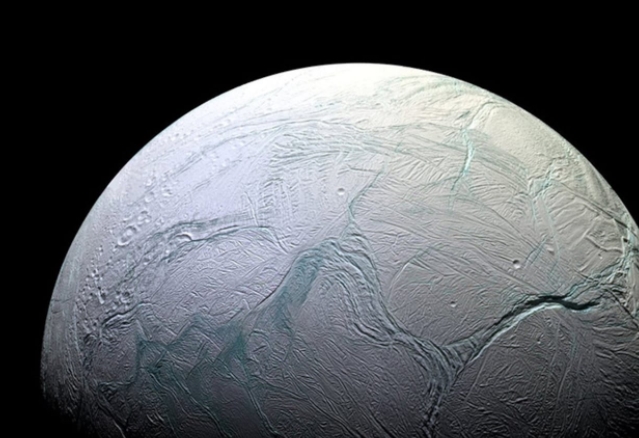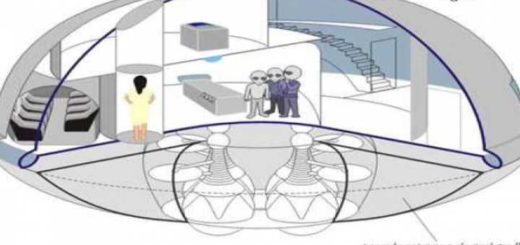Saturn’s mysterious moon has new ice and scientists aren’t sure why

Enceladus, Saturn’s mysterious moon that could support life, could be more geologically active than previously thought, according to a new study.
The research, published in the scientific journal Icarus, looked at new images from NASA’s Cassini spacecraft and found the northern hemisphere of Enceladus has been resurfaced with ice.
In 2005, Cassini observed that the southern hemisphere had more than 100 geysers shooting “out enormous plumes of ice grains and vapor from an ocean that lies under the icy crust,” according to a NASA statement. However, the new images point out it is happening in the northern hemisphere as well.
The researchers used Cassini’s on-board Visual and Infrared Mapping Spectrometer (VIMS) to look at heat signatures on Enceladus and created a new map of the moon to come up with their findings.
“The infrared shows us that the surface of the south pole is young, which is not a surprise because we knew about the jets that blast icy material there,” said study co-author, Gabriel Tobie, VIMS scientist with the University of Nantes in France, in the statement. “Now, thanks to these infrared eyes, you can go back in time and say that one large region in the northern hemisphere appears also young and was probably active not that long ago, in geologic timelines.”
The geysers are believed to have caused the “tiger stripes” on the moon, first spotted by NASA’s Cassini spacecraft. They are evenly spaced fissures, approximately 130 kilometers (81 miles) long and 35 kilometers (22 miles) apart.
It’s unclear how the icy resurfacing occurred or when it occurred, but the statement suggests a couple of possible explanations. “The resurfacing in the north may be due either to icy jets or to a more gradual movement of ice through fractures in the crust, from the subsurface ocean to the surface,” the statement from NASA JPL states.
The Cassini spacecraft intentionally plunged itself into Saturn’s atmosphere in September 2017. It was launched in 1997 at a total cost of $3.9 billion ($2.5 billion in pre-launch costs and $1.4 billion in post-launch). It spent 13 years circling, studying and taking data of Saturn and its moons.
In 2017, NASA found the presence of hydrogen in its atmosphere, something Linda Spilker, Cassini project scientist at NASA’s JPL, said at the time could be meaningful as a “potential source for energy from any microbes.”
One year later, scientists made a startling announcement when they said they had found complex organic molecules, the “building blocks” for life, on the moon. In 2019, researchers determined its ocean is likely 1 billion years old, placing it in the sweet spot for supporting life.
Enceladus is not the only celestial satellite of Saturn to intrigue scientists. In June, NASA announced the latest mission in its New Frontiers program. Known as Dragonfly, the mission will explore Saturn’s largest moon, Titan, which could potentially host extraterrestrial life.



 Creators of mankind
Creators of mankind Description of “Tall white aliens”
Description of “Tall white aliens” Where they came from?
Where they came from? About hostile civilizations
About hostile civilizations The war for the Earth
The war for the Earth “Tall white aliens” about eternal life
“Tall white aliens” about eternal life Video: “Nordic aliens”
Video: “Nordic aliens” Aliens
Aliens Alien encounters
Alien encounters The aliens base
The aliens base UFO
UFO Technology UFO
Technology UFO Underground civilization
Underground civilization Ancient alien artifacts
Ancient alien artifacts Military and UFO
Military and UFO Mysteries and hypotheses
Mysteries and hypotheses Scientific facts
Scientific facts


















